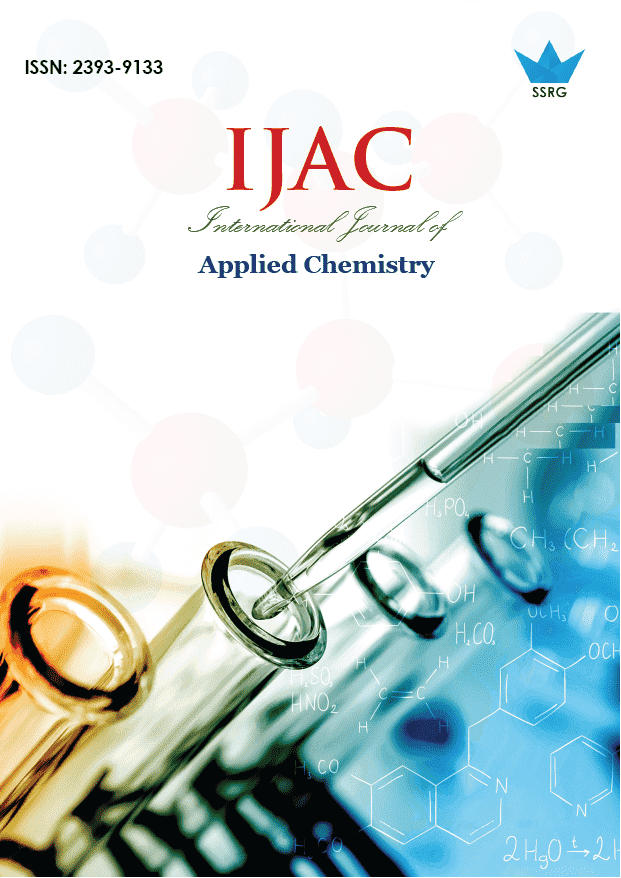Assessment of Heavy Metals Concentration and Microbial Profile in Sudanese Carbonated Soft Drinks and Beverages

| International Journal of Applied Chemistry |
| © 2025 by SSRG - IJAC Journal |
| Volume 12 Issue 2 |
| Year of Publication : 2025 |
| Authors : Awad Mohammed Babeker, Mohammed Bahreldin Hussein, Hamid Elhadi Briema, Abuzur Osman Adam |
How to Cite?
Awad Mohammed Babeker, Mohammed Bahreldin Hussein, Hamid Elhadi Briema, Abuzur Osman Adam, "Assessment of Heavy Metals Concentration and Microbial Profile in Sudanese Carbonated Soft Drinks and Beverages," SSRG International Journal of Applied Chemistry, vol. 12, no. 2, pp. 18-22, 2025. Crossref, https://doi.org/10.14445/23939133/IJAC-V12I2P104
Abstract:
The present study was conducted in the Faculty of Agriculture at Elnelien University during the period 2020 – 2022. The objective of the study was to determine the heavy metal and microbial profile of Sudanese carbonated soft drinks and beverages, and to determine whether they coincide with WHO (2011) standards. The data of samples were statistically analyzed by using the Complete Randomized Design (CRD), and the mean separation was done by the Least Significant Difference Test (LSDT). Firstly, Heavy metals recorded in soft drinks were Pb, and it was found in Sprite, Fanta, Pepsi and Miranda, and the values were above the permissible limit of 0.01 ppm, while in all companies, no Iron (Fe), Copper (Cu), Cadmium (Cd) and Chromium (Cr) metals were reported. Heavy metals recorded in beverages were Fe and Pb, and they were found below the permissible limit of 0.3 and 0.01, respectively, except for Pb content in Rio Mango, which was found to be above the permissible limit. In all beverages, no Copper (Cu), Cadmium (Cd), and Chromium (Cr) metals were reported. The microbial profile of soft drinks, beverages and water showed that total bacteria count, total fungal count, E. coli and Salmonella recorded negative results. It is concluded that no microbial hazards in the drinks. Therefore, it can be concluded that no microbial hazards in the beverages and waters. In case of soft drinks, the only heavy metal recorded was Pb and it was found in Sprite, Fanta, Pepsi and Miranda and the values were above the permissible limit, only heavy metals recorded in beverages were Fe and Pb and they were found below the permissible limit except Pb content in Rio Mango was found to be above the permissible limit. It was found that quality parameters in most soft drink samples were within the critical limit, so the net content end product quality parameters of all beverages and water are ok. It is recommended that more elaborate work be done on the general requirements of the food safety program.
Keywords:
Heavy metal, Microbial profile, Carbonated soft drink.
References:
[1] Sudanese Standards and Metrology Organization, Standard of Non-Alcoholic Carbonated Soft Drinks (250/2007), 2007. [Online]. Available: https://www.iso.org/member/2078.html
[2] WHO, Strategies for Implementing HACCP in Small and/or Less Developed Businesses, 1999.
[Google Scholar] [PublisherLink]
[3] Ahmad Galadima, and Zaharaddeen N. Garba, “Heavy Metals Pollution in Nigeria: Causes and Consequences,” Elixir Pollution, vol. 45, no. 1, pp. 7917-7922, 2012.
[Google Scholar] [Publisher Link]
[4] Engwa Azeh Godwill et al., “Determination of Some Soft Drink Constituents and Contamination by Some Heavy Metals in Nigeria,” Toxicology Reports, vol. 2, pp. 384-390, 2015.
[CrossRef] [Google Scholar] [Publisher Link]
[5] M. Bingöl et al., “Determination of Some Heavy Metal Levels in Soft Drinks from Turkey using ICP/OES Method,” CZECH Journal of Food Sciences, vol. 28, no. 3, pp. 213-216, 2010.
[CrossRef] [Google Scholar] [Publisher Link]
[6] Danyal Ibrahim et al., “Heavy Metal Poisoning: Clinical Presentations and Pathophysiology,” Clinics in Laboratory Medicine, vol. 26, no. 1, pp. 67-97, 2006.
[Google Scholar] [Publisher Link]
[7] W.L. Berry, and A. Wallace, “Toxicity: The Concept and Relationship to the Dose Response Curve,” Journal of Plant Nutrition, vol. 3, no. 1-4, pp. 13-19, 1981.
[CrossRef] [Google Scholar] [Publisher Link]
[8] M.N.V. Prasad, Heavy Metal Stress in Plants: From Biomolecules to Ecosystems, Springer Science & Business Media, 2004.
[Google Scholar] [Publisher Link]
[9] Johannes Godt et al., “The Toxicity of Cadmium and Resulting Hazards for Human Health,” Journal of Occupational Medicine and Toxicology, vol. 1, no. 1, pp. 1-6, 2006.
[CrossRef] [Google Scholar] [Publisher Link]
[10] Kevin C. Staudinger, and Victor S. Roth, “Occupational Lead Poisoning,” American Family Physician, vol. 57, no. 4, pp. 719 726, 1998.
[Google Scholar] [Publisher Link]
[11] Theodore I. Lidsky, and Jay S. Schneider, “Lead Neurotoxicity in Children: Basic Mechanisms and Clinical Correlates,” Brain, vol. 126, no. 1, pp. 5-19, 2003.
[CrossRef] [Google Scholar] [Publisher Link]
[12] Gillian Lockitch, “Perspectives on Lead Toxicity,” Clinical Biochemistry, vol. 26, no. 5, pp. 371-381, 1993.
[CrossRef] [Google Scholar] [Publisher Link]
[13] AOAC, International A: Official Methods of Analysis of the AOAC International, 2000.
[Google Scholar] [Publisher Link]
[14] W.F. Harrigan, Laboratory Methods in Food Microbiology, Gulf Professional Publishing, 1988.
[Google Scholar] [PublisherLink]

 10.14445/23939133/IJAC-V12I2P104
10.14445/23939133/IJAC-V12I2P104